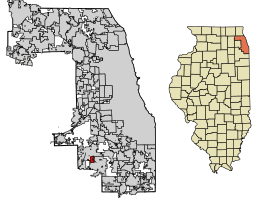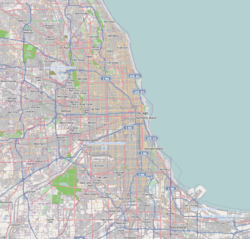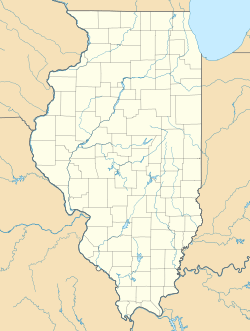Orland Hills, Illinois facts for kids
Quick facts for kids
Orland Hills, Illinois
|
|||
|---|---|---|---|
|
|||
| Motto(s):
"The Best Kept Secret in the Southwest"
|
|||

Location of Orland Hills in Cook County, Illinois.
|
|||
| Country | |||
| State | Illinois | ||
| County | Cook | ||
| Township | Orland | ||
| Incorporated | June 30, 1961 | ||
| Government | |||
| • Type | Council–manager | ||
| Area | |||
| • Total | 1.15 sq mi (2.98 km2) | ||
| • Land | 1.15 sq mi (2.96 km2) | ||
| • Water | 0.01 sq mi (0.02 km2) 0.87% | ||
| Population
(2020)
|
|||
| • Total | 6,893 | ||
| • Density | 6,020.09/sq mi (2,324.97/km2) | ||
| Up 5.46% from 2000 | |||
| Standard of living (2007-11) | |||
| • Per capita income | $28,411 | ||
| • Median home value | $240,800 | ||
| ZIP code(s) |
60487
|
||
| Area code(s) | 708 | ||
| Geocode | 17-56627 | ||
| FIPS code | 17-56627 | ||
Orland Hills, once known as Westhaven, is a village located in Cook County, Illinois, United States. According to the 2020 census, about 6,893 people lived here. As of 2022, there were 2,330 homes in the village.
Contents
Exploring Orland Hills: Location and Nature
Orland Hills is a village found between two other towns: Orland Park and Tinley Park. It has two beautiful lakes, Lake Ashbourne and Lake Lorin. You can also visit Kelly Park, a local green space.
The village covers about 1.15 square miles (2.98 square kilometers). Most of this area is land, with a small part being water, mainly from its lakes.
Who Lives in Orland Hills?
| Historical population | |||
|---|---|---|---|
| Census | Pop. | %± | |
| 1970 | 470 | — | |
| 1980 | 2,784 | 492.3% | |
| 1990 | 5,510 | 97.9% | |
| 2000 | 6,779 | 23.0% | |
| 2010 | 7,149 | 5.5% | |
| 2020 | 6,893 | −3.6% | |
| U.S. Decennial Census 2010 2020 |
|||
In 2020, the village had 6,893 people living in 2,386 households. About 1,804 of these were families. The population density was about 5,978 people per square mile.
The people living in Orland Hills come from many different backgrounds:
- About 73.73% were White.
- About 8.89% were African American.
- About 4.92% were Asian.
- About 12.39% of the population identified as Hispanic or Latino.
Many households (30%) had children under 18 living with them. The average household had about 3.49 people. The median age in the village was 37.3 years old.
Orland Hills is also known for having a notable Arab American population. Between 2010 and 2014, about 16.9% of the people in Orland Hills were Arab American. This makes it one of the top communities in Illinois for this group. Nearby towns like Orland Park and Tinley Park also have many Arab American residents.
Learning in Orland Hills: Schools
Students in Orland Hills attend different high schools depending on where they live.
- Those living south of Meadowview Avenue go to Victor J. Andrew High School.
- Those living north of Meadowview Avenue attend Carl Sandburg High School.
There are also two elementary school districts that serve the village:
- Kirby School District 140
- Orland School District 135
Orland Hills is also home to a private Catholic school called Cardinal Joseph Bernadine Catholic School, or CJB. It is managed by the Roman Catholic Archdiocese of Chicago.
Getting Around: Transportation
Pace offers bus service on Route 364. This bus connects Orland Hills to other places in the Southland area, making it easier for people to travel.
Notable People from Orland Hills
- Michael E. Hastings is an Illinois legislator and lawyer. He grew up in Orland Hills. His political district includes Orland Hills.
See also
 In Spanish: Orland Hills (Illinois) para niños
In Spanish: Orland Hills (Illinois) para niños






